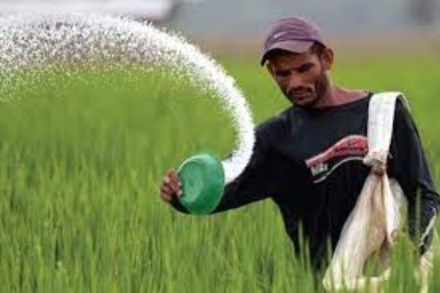Concerned over extraordinary price rise of raw material used to manufacture diammonium phosphate (DAP) fertiliser in international market this year, the government has decided to ramp up domestic production to cut imports. The Centre has already decided to increase the subsidy on DAP by 140% to Rs 1,200/ bag during this kharif season to insulate farmers from the spike in global prices.
The budget allocation for subsidy of P and K fertilisers for FY22 is Rs 20,720 crore as against Rs 37,372 crore spent in FY21. The total fertiliser bill for the current financial year was pegged at Rs 79,530 crore, as against Rs 1.28 lakh crore, with urea being the most commonly used and the most subsidised fertiliser. After the decision on DAP, the fertiliser subsidy bill will increase by Rs 14,775 crore in current fiscal.
For over a decade now, prices to the farmers of phosphatic and potassic fertiliesrs are to a large extent determined by the market as subsidies provided by the government are fixed. These fertilisers are mostly imported, as high as 90% of annual demand.
Minister of state for fertliser Mansukh Mandaviya directed to commercially exploit and ramp up the production in the existing 30 lakh tonne of phosphorite deposits which are available in Rajasthan, central part of peninsular India, Hirapur (Madhya Pradesh), Lalitpur (Uttar Pradesh), Mussoorie syncline (Uttarakhand) and Cuddapah basin (Andhra Pradesh), fertiliser ministry said on Monday.
Chairing a meeting with ministry officials and industry stakeholders to improve the availability of phosphatic fertilisers and to reduce the dependence on imports, Mandaviya said that the department of fertilisers is ready with an action plan to make India Aatmanirbhar in rock phosphate, the key raw material to manufacture DAP.
Discussion and planning with department of mining and Geological Survey of India is going on to expedite the exploration in the potential potassic ore resources in Rajasthan’s Satipura, Bharusari and Lakhasar and to explore in Uttar Pradesh, Madhya Pradesh, Gujarat, Andhra Pradesh and Karnataka. All the departments are working jointly to start the mining of potential reserves as soon as possible, the statement said. Potash is the key raw material to manufacture Muriate of Potash (MoP) fertiliser.
In 2019-20, the total sales of DAP and MoP fertilisers were to the tune of around 13 million tonne, out of which DAP alone had about 10 million tonne, according to industry estimate. In 2020-21, the consumption of DAP and MoP fertilisers was estimated to have grown by over 15% to about 15 million tonne.
The international prices of phosphoric acid, ammonia and other items used in DAP have gone up by 60-70% since late March. Prices of finished DAP in international market have also increased. Despite this sharp increase, DAP prices in India were initially not increased by the companies, but some companies later increased the prices beginning of this financial year. The government subsequently asked all the fertiliser firms to sell their old stocks of DAP at the old prices only.
